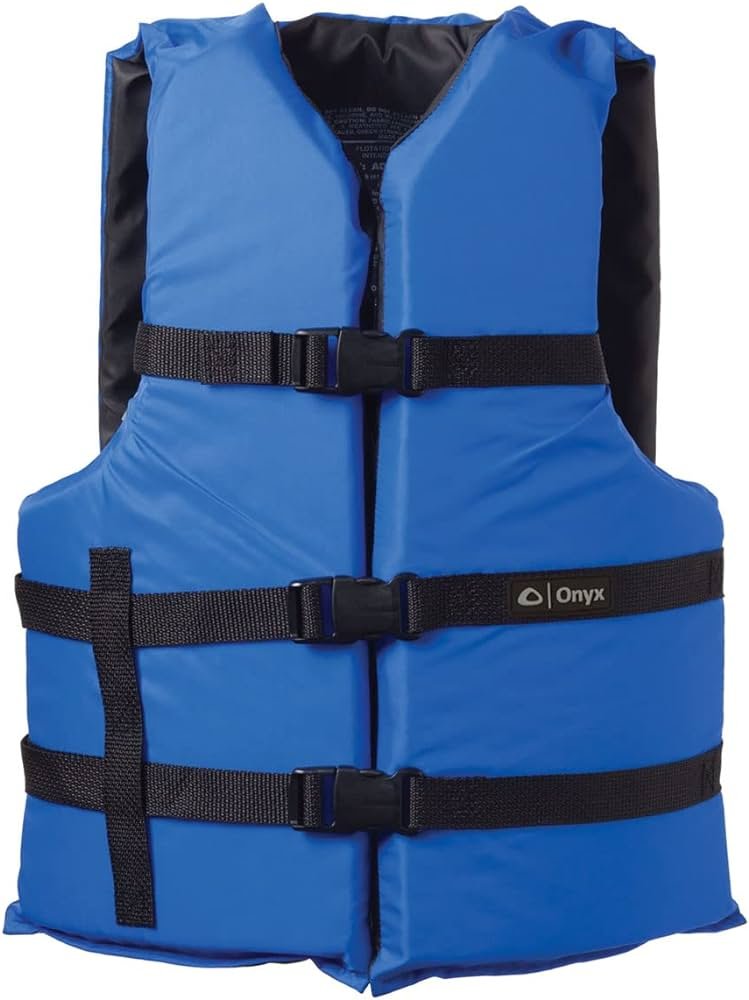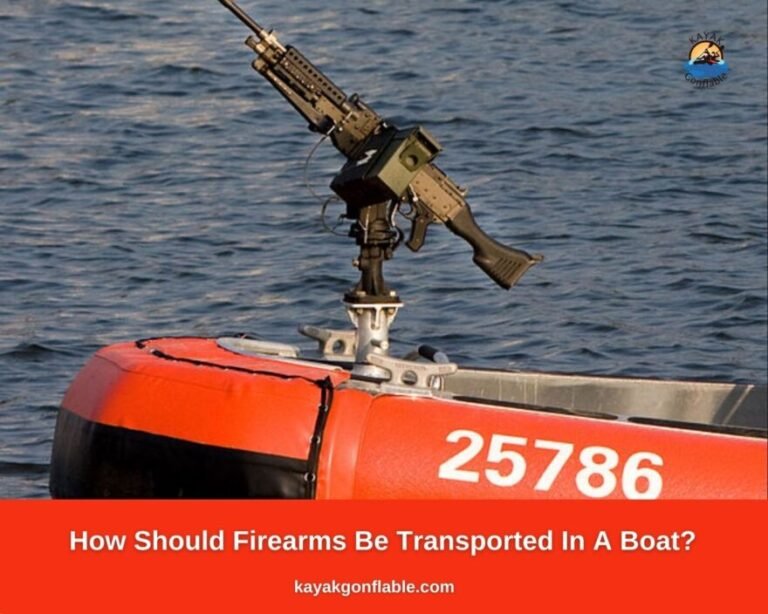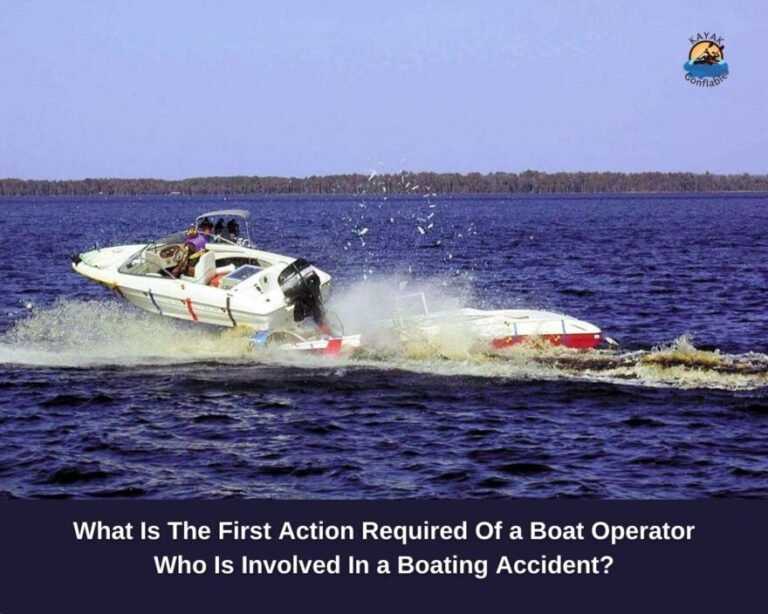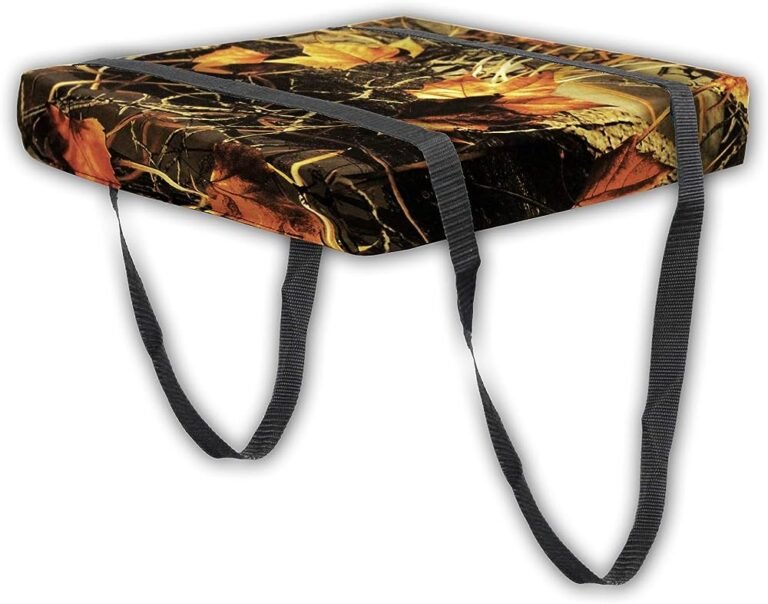Where Is The Best Place To Put PFDs While You Are Out On Your Boat?

Anyone who has ever taken part in a water sport or spent time on the water knows that the importance of a PFD cannot be overemphasized. People are advised to always wear one on the water and with good reason.
They are safety devices and sometimes make the difference between life and death in an accident. Humans being humans, however, don’t always obey this golden rule of always putting on a life jacket; this raises the question of where exactly on a watercraft a PFD should be stored.
Their importance as safety devices means they must be kept where they can be easily accessed and worn even in the event of an emergency. This article enlightens you on where to put your PFDs for easy accessibility and use.
What is a PFD?
PFDs are Personal Flotation Devices, which are designed to keep a person afloat if they become unconscious or lose control of their boat, canoe, or raft. They come in many shapes and sizes and can be made from a variety of materials, including neoprene, vinyl, and Mylar.
PFDs can be worn by people of all ages and sizes, and come in a variety of colors and styles to help people easily identify them when they are swimming or boating. Some PFDs come with lifejackets, while others only have buoyancy aids.
A PFD should be worn when participating in any water-related activity, such as boating, swimming, surfing, and fishing. PFDs are mandatory for people who are sailing in U.S. waters, and they are often recommended for people who recreational swim or boat.
PFDs protect people from drowning and help minimize the risk of serious injury in the event of a sink or capsize.
Location Of PFDs On The Boat
To keep everyone safe on a boat, each person must have a personal flotation device (PFD) properly fitted and properly worn.
Not only does it protect you from drowning if the boat sinks, but having a PFD also makes you more visible to other boaters and can help in the event of an emergency. Then where PFDs are kept is crucial to safety.
PFDs should be strategically located on a boat so they are easily accessible and can be reached even in an emergency. Some of the best locations for a Personal Flotation Device are given below.
In The Cabin
PFDs should be kept in the cabin when cruising. They can provide peace of mind in case of an emergency and help protect you and your passengers from serious injury or death.
PFDs should be stored where they are easily accessible. The cabin is as good a place as any to keep PFDs as everyone aboard the watercraft knows its location and the PFDs in it will be impossible to miss.
Everyone aboard the vessel should also be given basic instructions on water safety and how to wear a PFD so they are not a liability in an emergency.
On Deck
Boaters should always keep Personal Flotation Devices (PFDs) on the boat’s deck, where they are most effective in case of an emergency.
This is especially important when operating in coastal or open waters where there is a heightened risk of rip currents. Rip currents can pull you out to sea very quickly and without warning.
You should also keep PFDs on deck when the weather is bad and the boat is not in a designated swimming area. PFDs provide buoyancy and help keep a person afloat until they can be rescued.
They will also help protect you if the boat overturns or catches on something. Having PFDs on deck makes it easy for boaters to put them on when they notice a change in the weather or other alarming changes.
PFDs on deck can also easily be thrown to people overboard to help keep them afloat till help comes. They will also be readily available floating in water in the advent of capsizing and potentially save people from drowning.
Near The Helm
The presence of a personal flotation device (PFD) is mandatory by law for anyone over the age of 12 years when onboard a vessel. PFDs can save your life in the event of a water rescue, but they should be kept near the helm where they are easily accessible.
This will help you avoid having to search for and retrieve your PFD if an emergency occurs. With so much happening at once on a boat, it can be easy to lose your footing and end up in danger.
Keep your PFD close by at all times to ensure your safety! Here are two reasons why PFDs should be kept near the boat’s helm.
• It is the most likely place for someone to need them in an emergency.
• If the boat overturns, the PFDs will be floating and will be able to save lives.
A PFD is an inflatable life preserver that provides buoyancy in the water. It is recommended to have one for each person on board, whether they are passengers or crew members.
In A Storage Area
PFDs are important and should be kept in a safe place. This means that they should be stored in a storage area that is easy to access and not too high up or difficult to get to.
This will help keep them clean and free of debris. PFDs need to be accessible in an emergency so that they can be worn by the persons who need them.
There are different ways to store PFDs, and what is best for one person may not be the best for another person. Your storage method should match the manufacturer’s recommendations and your storage preferences.
PFDs should be well maintained for prolonged use. If the PFD becomes lost or damaged, it needs to be replaced as soon as possible. It is important to wear a PFD while out on your boat. There are many different places to put a PFD, and it is important to find the best place for you and your boat.
It is best to store your PFDs in a place that is easily accessible in the event of an emergency. It follows then that it is best to keep your PFDs on you at all times while on your boat.
This will help to ensure your safety and the safety of your passengers. If you are not wearing a PFD, it is important to keep them within reach so that you can put them on quickly if necessary.
Personal Flotation Devices can be kept at the vessel’s helm, on the deck, or even in your boat’s cabin; just make sure everyone knows where they are and knows how to use one if they are not wearing one already.
PFDs can also be kept in storage compartments. Make sure to always practice safe boating habits, always wear your PFD when out on the water, be safe, and have a great time out on the water!
How To Wear A PFD?
If you are venturing out into open water, whether it’s for pleasure or work, it’s important to wear safety gear. Many people do not know how to wear a personal flotation device, also called a PFD.
There are many different types of PFDs and it is important to know how to put them on correctly to avoid drowning. Here are some tips for wearing a PFD:
- Make sure the device is properly inflated. PFDs come in a variety of types, so it’s important to ensure that yours is inflated to the correct pressure for buoyancy and safety.
- Make sure the PFD is properly sized for your body. Make sure that your PFD fits you properly by adjusting the straps for a snug fit.
- Make sure the straps are adjusted so that they are tight but not too tight; you don’t want to cut off blood circulation. Adjust the straps so they don’t slip off or get caught on anything when you’re swimming or performing other activities.
- If the straps are too loose and are not tight enough to keep it from moving around, then you might want to put another strap over the top of the first one to tighten it up.
- Make sure the straps are positioned properly on your shoulders and chest.
- Make sure you are wearing the PFD properly on your back. Secure it to your body by tying a knot in the waistline strap and tucking the tail end inside the waistband.
- Make sure that the PFD is between you and the water.
- Be sure to read your PFD manual before use or have an instructor put you through wearing your PFD if you’re new to water sports. You can never be too careful.
When To Wear A PFD?
There are a few factors you need to consider before wearing a personal flotation device.
First, you should always consult with your doctor or certified instructor before using one, as some people are not suited for them.
Next, the device should fit well and be comfortable to wear. Third, the device should be appropriate for the water conditions in which you plan to use it.
Lastly, always make sure that you have a current safety card with your personal flotation device. This will ensure that the device is used correctly and to its full potential. Keep in mind that all these should be done before hitting the water.
A Personal Flotation Device, also known as a PFD, is a life-saving device that should always be worn while boating. There are many different circumstances when wearing a PFD becomes necessary, and the decision of when to wear one often depends on the specific situation.
Wearing a PFD generally revolves around the type of boat you are using, the weather conditions, the state of the water currents, and your safety.
If the waves start getting rough or the weather changes drastically, it is probably a good time to wear your PFD to be on the safe side.
You should also wear your PFD if you are engaged in water sports or other physically taxing activities on the water.
Inflatable vs. Non-Inflatable PFDs
When looking for a personal floatation device (PFD), some people may be torn between choosing an inflatable or non-inflatable type.
There are many types of personal flotation devices (PFDs), but the two most common are inflatable and non-inflatable. Inflatable PFDs use gas or air to expand when the user inflates them, providing buoyancy.
Non-inflatable PFDs, on the other hand, rely on a bladder or other storage device to store air and release it when needed.
There are pros and cons to choosing an inflatable or non-inflatable PFD for boating. Non-inflatable PFDs are more comfortable, but inflatable PFDs can be easier to use in an emergency. The inflatable version is also lighter than its counterpart.
The main difference between the two however is that an inflatable PFD will automatically inflate when it detects water, whereas a non-inflatable PFD must be manually inflated with air.
Additionally, an inflatable PFD will typically have a shorter life than a non-inflatable PFD if it is not properly maintained.
How To Choose The Right PFD for You
If you’re planning on spending time in the water, whether it’s kayaking, canoeing, fishing, swimming, or just taking a quick dip, you’ll need to invest in a personal flotation device (PFD).
Not only do PFDs protect you from drowning, but they also provide basic safety features such as buoyancy and stability.
So which one is right for you? When you think about purchasing a personal flotation device (PFD), there are a few things to consider. Here are three tips to help you choose the right PFD for your needs.
- Think about your activities. There are many different types of PFDs available, and each one is designed for specific types of activities. Some are better for whitewater kayaking than others, and some are great for diving. The right PFD will be designed for your activity.
- Think about the environment you will be using it in. Look online for reviews and information on the PFDs you are considering. Many times, people will review their PFD after a bad experience so reviews will help you choose a good PFD.
- Just as important as the aforementioned tips is how much you are willing to spare. Like all things, PFDs have price tags; you buy the one you can afford.
Frequently Asked Questions
Are PFDs difficult to put on in water?
It is common knowledge that PFDs keep you from drowning and can help you stay afloat for an extended period in an emergency. Unfortunately, people don’t always heed caution and many a time are found without a PFD on the water.
Emergencies often strike without warning and boaters sometimes find themselves at the mercy of the currents. They then at times scramble to put PFDs on to help stay afloat.
It is crucial however to keep in mind that PFDs are often difficult to put on in water, especially in turbulent conditions. This is because you have to ensure that the PFD is well-worn to provide the buoyancy required in the water.
While it is indeed difficult, wearing a PFD successfully in water can be done and boaters are advised to practice wearing one in water in controlled conditions to prepare for that eventuality.
With practice, boaters eventually become able to quickly put their PFDs on even in emergencies, and stay safe. It is however advisable to wear your PFD before hitting the water as you never can tell what will happen.
You might not be able to access a Personal Flotation Device once in water even if you are skilled at putting one on in turbulent waters and might end up injured or dead as a result.
PFDs on a boat must be readily accessible. Which storage method best meets this requirement?
A Personal Flotation Device (PFD) must be readily accessible on a boat. The storage method that best meets this requirement is to have them stored on the bow or in an easily accessible location near the helm. This way, it is easy for someone to get to them if they need them.
A PFD should also be stored away from items that could be knocked overboard, like anchors and ropes. You can also keep your PFDs on the watercraft deck, or have them stored in a locker adjacent to the boat’s seating area.
PFDs should be inspected and maintained regularly. This is to ensure the PFDs remain in good working condition and that they are not beginning to wear out or deteriorate over time.
If your PFD shows any sign of deterioration, it is due for a replacement. Remember that safety devices should always be in pristine condition to adequately play their role.
What is the best way to check the buoyancy of your PFD?
Personal Flotation Devices are safety devices meant to keep you safe on the water. It, therefore, goes without saying that such equipment should be in top shape to adequately perform its duty.
Before using your PFD in dangerous situations, you should trust that it will keep you from drowning should an emergency occur.
There are several ways to test for PFD buoyancy. The best and easiest however is to test the PFD in a controlled situation.
This method can easily be employed by anyone without the need for technical know-how. It involves wearing your PFD and then entering shallow water.
You then bend your knees and float on your back as though you’ve lost control in an emergency. If the PFD easily keeps you afloat, it is buoyant enough and will probably keep you safe in an emergency.
This method is a good way to test PFD buoyancy especially when you have little time. You could employ more complex methods if you so desire but once the PFD passes this test, you are good to go.






